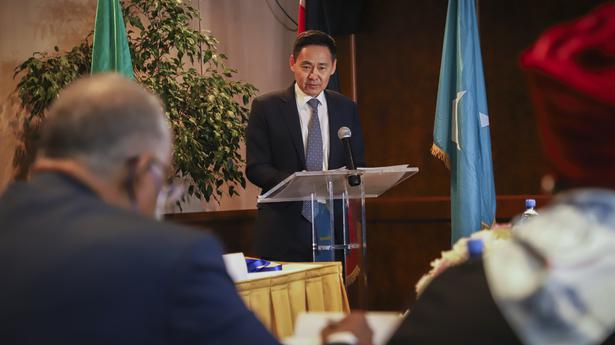
Explained | China’s interventions in the Horn of Africa
The Hindu
Is Beijing moving away from its policy of non-intervention in Africa? How are different African states reacting to these developments?
The story so far: China has been investing across the African continent throughout the last decade. While the emphasis has been on investments and raw materials, it took a new turn on June 20, with the first “China-Horn of Africa Peace, Governance and Development Conference.” Beijing’s first special envoy to the region Xue Bing, appointed in February 2022, said that this is the first time China aims “to play a role in the area of security”. The conference held in Ethiopia witnessed the participation of foreign Ministries from the following countries of the Horn: Kenya, Djibouti, Ethiopia, Sudan, Somalia, South Sudan, and Uganda.
China’s focus on the Horn is a part of its focus on Africa. In January 2022, during his 17th trip to Africa, China’s Foreign Minister and State Councillor Wang Yi focused on increasing the infrastructural investments in African countries. He refuted accusations of debt-trapping the countries and asserted China’s three objectives in Africa: controlling the pandemic, implementing a Forum on China-Africa Cooperation (FOCAC) outcomes, and upholding common interests while fighting hegemonic politics.
The FOCAC promotes China’s role in the infrastructural and societal development of the Horn. In the 2021 forum, the entire region of the Horn participated and four resolutions were adopted: the Dakar Action Plan, the China-Africa Cooperation Vision 2035, the Sino-African Declaration on Climate Change and the Declaration of the Eighth Ministerial Conference of FOCAC.
During the COVID-19 pandemic, China donated over 3,00,000 vaccines to Ethiopia and Uganda, and 2,00,000 vaccines to Kenya and Somalia. Sudan and Eritrea have also benefited from China’s vaccine diplomacy.
Beijing has also initiated the “2035 vision for China-Africa cooperation”; it aims to transform the health sector, alleviate poverty, promote trade and investments, and expand digital innovation. The vision also focuses on green development, capacity building, improving people-to-people exchanges and facilitating peace and security in the continent.
China’s interests are related to four major areas: infrastructural projects, financial assistance, natural resources and maritime interests. Looking at Chinese investments in infrastructure, one of its landmark projects was fully funding the $200 million African Union headquarters in Addis Ababa. It has also made significant investments in railways; it is building the Addis-Djibouti railway line connecting the land-locked country with Eritrean ports in the Red Sea. China has also invested in the Mombasa-Nairobi rail link in Kenya, and has already delivered on railway projects in Sudan. It also has a viable military hardware market in Ethiopia and has built over 80 infrastructural projects in Somalia, including hospitals, roads, schools and stadiums. In Djibouti, 14 infrastructural projects are funded by China.
With respect to financial assistance, Ethiopia, is one of the top five African recipients of Chinese investments, and also has a debt of almost $14 billion. China accounts for 67% of Kenya’s bilateral debt. In 2022, China promised to provide $15.7 million assistance to Eritrea.





















 Run 3 Space | Play Space Running Game
Run 3 Space | Play Space Running Game Traffic Jam 3D | Online Racing Game
Traffic Jam 3D | Online Racing Game Duck Hunt | Play Old Classic Game
Duck Hunt | Play Old Classic Game











